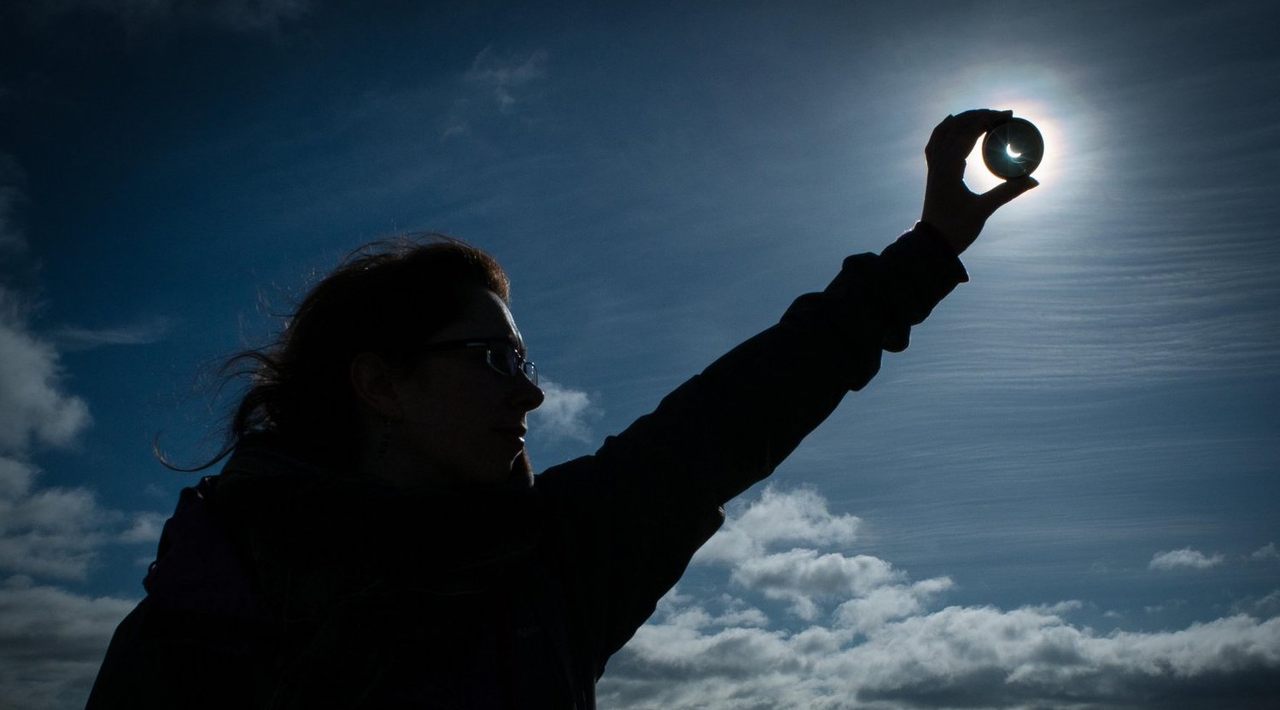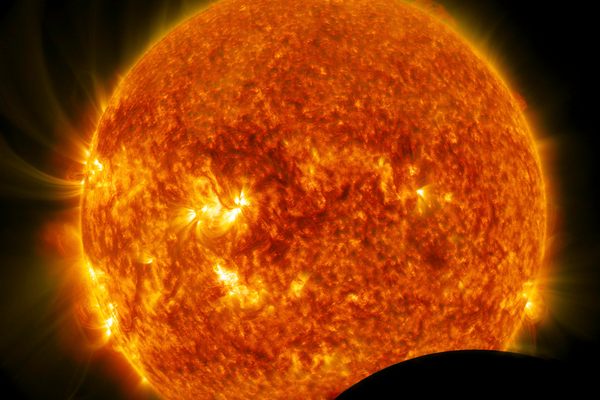Why Clouds Vanish During Solar Eclipses
New research explains the science behind the sudden disappearance of fluffy cumulus clouds during a solar eclipse.
In 1972, a group of umbraphiles gathered in Nova Scotia to witness a total solar eclipse. Just before the celestial event was to begin, clouds completely obscured the view. One of the group members, now-retired geoscientist Steve Dutch, recalled that, as the eclipse began, the clouds suddenly fled. “All of us had perfect views,” he wrote in an online post.
The clearing wasn’t a fluke or divine intervention, but the now-documented reaction of certain kinds of clouds to solar eclipses.
Cumulus clouds—the low-lying, fluffy ones with flat bottoms and poofy tops—dissipate as an eclipse begins, according to a recent paper in the journal Communications Earth & Environment. The authors found that the moon needs to obscure a mere 15 percent of the sun to initiate cloud clearing. While this can be convenient for viewing the solar eclipse, researchers worry the phenomenon could be a problem for solar-deflecting technology.

In the past, satellite data regarding cloud cover before and after solar eclipses hinted that clouds may dissipate during these celestial events. But measuring clouds during the actual eclipse is much trickier, because algorithms for predicting cloud cover and density don’t account for the decrease in solar radiation. Researchers were left in the dark—until they created a new model, which accounts for the percent of the sun obscured throughout the eclipse. Using the new approach, lead author Victor Trees and his research team at the Royal Netherlands Meteorological Institute and Delft University of Technology were able to revisit old satellite measurements from three eclipses a couple decades ago.
They discovered a chain reaction: The eclipse causes changes at ground level, which in turn affects cloud cover. Blocking sunlight cools Earth’s surface. This temperature change slows the rise of warm air and water vapor, which is responsible for cumulus cloud formation. So less sun means lower temperatures on the ground, which leads to fewer clouds. That’s where that 15 percent threshold becomes important: that’s the small fraction of the sun that needs to be obscured for clouds to thin out. “At that instant, there is still plenty of light outside and people don’t commonly realize an eclipse is happening,” says Trees.
And if you’re out at sea, you won’t see this phenomenon at all. When the eclipse’s shadow passes over the ocean, clouds remain unchanged. The ocean doesn’t cool down as easily as land, keeping cumulus clouds kicking. And on land or sea, other types of clouds are less sensitive to subtle cooling and aren’t directly affected by eclipse-related temperature shifts—which means they can still block your view of the event.
While the clearing of some clouds can be a big plus for eclipse-chasers, these findings could have some negative implications for new technologies aimed at cooling the planet. One idea, for example, is to place reflective solar sails in space, which proponents say could deflect some of the sun’s rays and theoretically cool Earth’s surface. If implemented, however, such projects could influence cloud cover in unintended ways, says Trees.
Cumulus clouds in particular play an important role in Earth’s water cycle, and influencing their patterns could impact rainfall and actually increase temperatures. “You would weaken the natural cooling effect of these bright, shiny clouds,” says climate change data scientist Rick Russotto, at Columbia University’s Lamont-Doherty Earth Observatory, who was not involved in the study. The potential result: You may have to deflect even more light to account for the loss of shade-bearing clouds.
While the implications of proposed technologies are still unknown, you need not fear cumulus clouds blocking a solar eclipse. You may even hope for them, just for the chance to see them disappear.



















Follow us on Twitter to get the latest on the world's hidden wonders.
Like us on Facebook to get the latest on the world's hidden wonders.
Follow us on Twitter Like us on Facebook